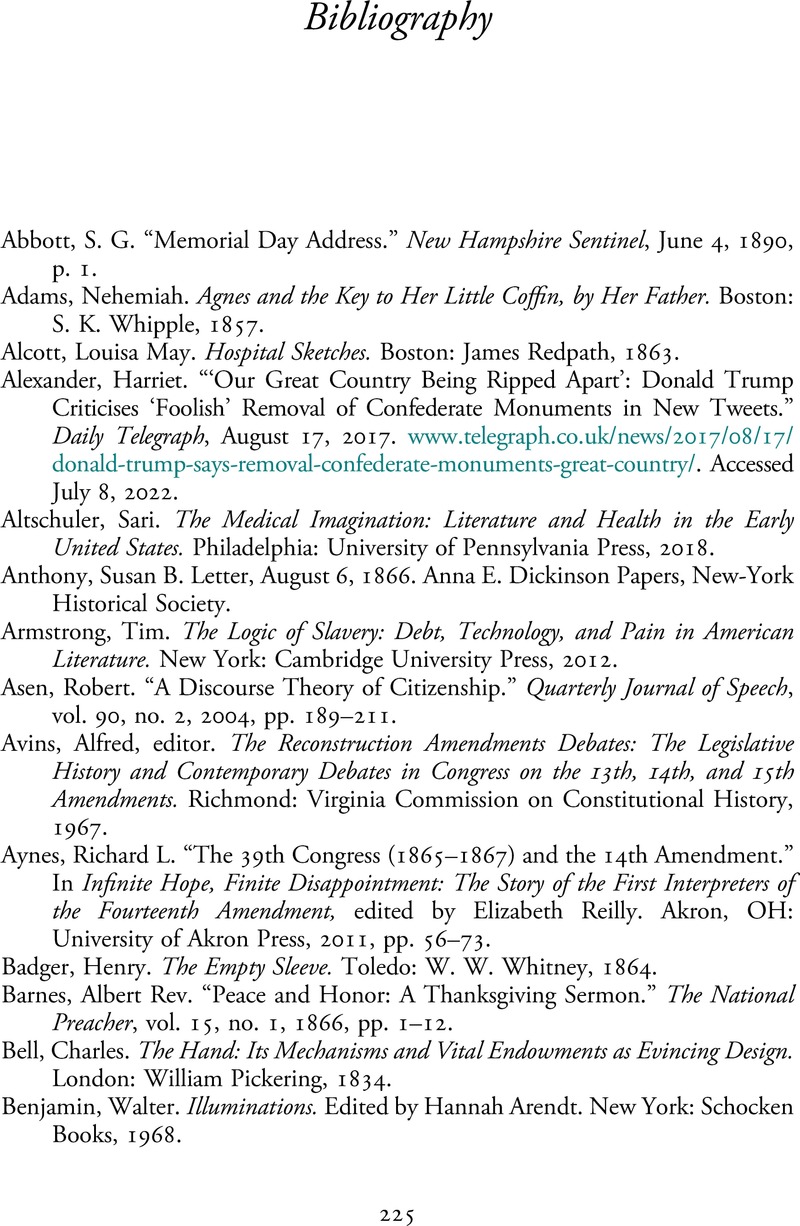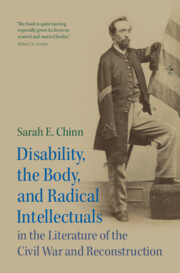Book contents
- Disability, the Body, and Radical Intellectuals in the Literature of the Civil War and Reconstruction
- Cambridge Studies in American Literature and Culture
- Disability, the Body, and Radical Intellectuals in the Literature of the Civil War and Reconstruction
- Copyright page
- Dedication
- Contents
- Figures
- Acknowledgments
- Introduction
- Chapter 1 Giving Up the Ghost
- Chapter 2 “Strewn promiscuously about”
- Chapter 3 1860 or 1865? Amending the National Body
- Chapter 4 “I don’t care a rag for ‘the Union as it was’”
- Chapter 5 Shaking Hands
- Conclusion
- Notes
- Bibliography
- Index
- Recent books in this series (continued from page ii)
- References
Bibliography
Published online by Cambridge University Press: aN Invalid Date NaN
- Disability, the Body, and Radical Intellectuals in the Literature of the Civil War and Reconstruction
- Cambridge Studies in American Literature and Culture
- Disability, the Body, and Radical Intellectuals in the Literature of the Civil War and Reconstruction
- Copyright page
- Dedication
- Contents
- Figures
- Acknowledgments
- Introduction
- Chapter 1 Giving Up the Ghost
- Chapter 2 “Strewn promiscuously about”
- Chapter 3 1860 or 1865? Amending the National Body
- Chapter 4 “I don’t care a rag for ‘the Union as it was’”
- Chapter 5 Shaking Hands
- Conclusion
- Notes
- Bibliography
- Index
- Recent books in this series (continued from page ii)
- References
Summary

- Type
- Chapter
- Information
- Disability, the Body, and Radical Intellectuals in the Literature of the Civil War and Reconstruction , pp. 225 - 238Publisher: Cambridge University PressPrint publication year: 2024



